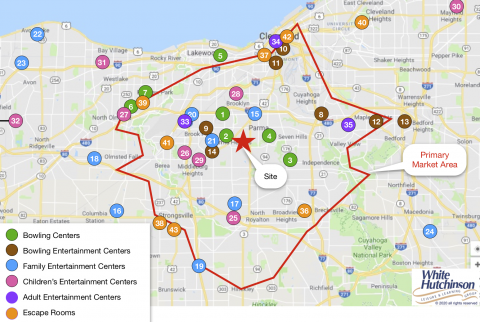
Vol. XX, No. 1, January 2020
- Editor's corner
- Is location-based VR a Trojan Horse?
- The living wage needed to live comfortably and have disposable spending
- Randy White to keynote at Entertainment Experience Evolution & present at agritourism convention
- Getting to the root cause of declining repeat appeal at many out-of-home entertainment venues
- What is today's consumer looking for in out-of-home entertainment?
- The growing sober-curious trend
- Why market and financial feasibility studies need to be different today
Why market and financial feasibility studies need to be different today
Our company has just completed our 31stconsecutive year working in the out-of-home (OOH), location-based entertainment (LBE) industry, an industry that is so constantly changing even its name has had to evolve. Originally, and unfortunately still generally referred to as the "family entertainment center" (FEC) industry, most successful venues today aren't designed for families. Even LBE is probably no longer an appropriate name for the industry, as most venues now need to offer so much more than just entertainment to be successful. We now prefer to call it the location-based leisure (LBL) industry to account for its far more diverse offerings and target markets than a decade or so ago.
But whatever you call it, the LBL industry is completely different today than in its early days as FECs. There are far more types of LBLs targeting different niche markets than the FEC concept of trying to be all things to all people. There is now vastly more competition than even just ten years ago, and this doesn't just include all the LBLs, but also all the digital entertainment options we now have to enjoy in our homes sitting in our comfy lounge chairs.
What the evolution of the industry means is that the approach and methodology we used for market and financial feasibility studies in the industry's early days is no longer valid today. Back then, feasibility studies didn't need to be as complicated and in-depth as today. We basically identified the primary and secondary market areas based on drivetimes (anyone who says you only need to do it with two concentric distance circles is dead wrong), physical and psychological barriers and competition, pulled up their demographics, and if the market was large enough and the site good, some standard formula FEC would work. Back then there was little out-home LBE/FEC competition, and we didn't have all the at-home entertainment options we do today.

The market area for an LBL is a function of drivetimes, competition and physical and psychological barriers, not some distance concentric circles.
Of course, today, it's a whole new ball game with multiple type LBLs and at-home entertainment options. Plus, the consumer is completely different than they were back then. Entertainment alone often is no longer attractive enough to get consumers out of their homes. The food and beverage component has often taken on an equal, sometimes primary, role. It's now all about the whole experience, not just the entertainment attractions like in the early days. Social media has completely changed marketing. There are far more OOH leisure options in most sizable markets than anyone could ever hope to visit. Many restaurants, fed by the foodie trend, have now morphed into what could be considered a competitive form of entertainment. Festivals and live entertainment options have exploded.
The other thing that's different today is we live in times of accelerating change. As a result, the life cycle of many things is much shorter. This is especially true for many types of entertainment attractions. They have lost their repeat appeal. So, the business model you saw working just yesterday at an LBL might well be out of date by the time you replicate it. So now it's important to understand and take into consideration the megatrends underway that are shaping consumers' values and behaviors in order to plan an LBL.
That is the reason our company now spends substantial time and money identifying megatrends that are shaping the future of LBLs, as any LBL we start producing for our clients won't open until the future, not today, and will need to be financially sustainable for long enough thereafter to justify its cost.
Today, when performing a feasibility study, with many markets already oversaturated, the first issue becomes is there still an opportunity to attract a target niche market to some unique concept that will have sustainable repeat appeal, and if so what does the LBL concept need to be. There is no longer some stock formula that can be used. Each LBL has to be a bespoke formula for its market. This requires examining more than what are considered traditional LBE and FEC centers, but also looking at all the OOH entertainment options as well as the restaurant competition in the market area. It also requires understanding the megatrends impacting OOH leisure and where they are headed, as we are planning an LBL venue for the future.
Additional reading:
Vol. XX, No. 1, January 2020
- Editor's corner
- Is location-based VR a Trojan Horse?
- The living wage needed to live comfortably and have disposable spending
- Randy White to keynote at Entertainment Experience Evolution & present at agritourism convention
- Getting to the root cause of declining repeat appeal at many out-of-home entertainment venues
- What is today's consumer looking for in out-of-home entertainment?
- The growing sober-curious trend
- Why market and financial feasibility studies need to be different today


